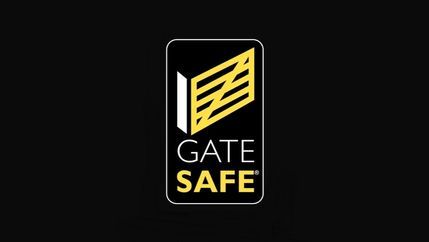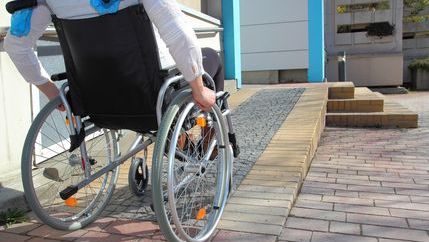
Reference to automated or electric gates on property details no longer necessarily indicates that the abode fits into the exclusive or elite category. Originally most frequently seen as a feature for highly prestigious properties, these automated gates are now regularly seen across a wide variety of homes, offering the benefit of added security via an established and effective method of access control. In addition to representing a deterrent to intruders, the gates are also a practical solution to keeping children and pets safely within the confines of the grounds.
But while these automated gates are intended to protect, without the correct installation and subsequently recommended maintenance regime, they are capable of inflicting severe – sometimes fatal – injuries.
Unsafe gates and the consequences
In 2010, two children were killed in separate accidents, both of which involved social housing sites featuring automated gates whose safety features were found to be lacking.
Since then, there have been around 38 (and these are only the reported cases) accidents, including 11 further deaths involving automated gates. Penalties handed out by the courts range from a jail sentences to fines as high as £500,000.
Property professionals at risk
When an automated gate accident occurs, previous court cases have proven that everyone associated with the gate is under scrutiny, from the architect to the electrician who finally powers the gate — and anyone in between. This naturally potentially also includes property professionals who have a duty of care to those considering either buying or leasing a property which includes automated gates.
Just as there is a strong code of practice in place to check the gas supply to the home is ‘gas safe’ so too should the agent ensure that the gate is ‘gate safe’.
Whilst there is no precedent relating to court cases where an estate agent or letting agent is implicated, there is a requirement that those operating in the sector should be aware of the possible dangers associated with an unsafe gate and should demonstrate best practices by guiding their clients accordingly.
What constitutes a safe gate
Automated gates are legally classed as machines. These are typically heavy gates that can crush, drag or hook a user in the event of the gate failing to stop when a person is detected, ultimately trapping the victim.
A correctly installed gate should feature the relevant safety devices which will ensure the gate stops and reverts back as soon as this happens.
In addition, the structure may be rendered unsafe as a result of a ‘single point failure’ i.e., an oversight which does not relate specifically to the inclusion of safety features, but rather a failure to follow the correct protocol when designing, manufacturing, installing or maintaining the gate, which once again poses a serious risk of injury or worse.
An electric gate must meet certain safety criteria – and clients should be made aware that it will only remain safe if the appropriate maintenance schedule is adhered to.
Safety requirements checklist
For those operating in the property sector, it is important to demonstrate that your business operates to the highest standards, abiding by accepted best practices. Acknowledged protocol, the Health and Safety Executive and the British Standards dictate that a minimum of two types of safety features should be present on ANY electric gate.
Gate Safe, which has led the field in improving the standard of safety for automated gates and barriers since 2010, advises property professionals to adhere to the following checklist when reviewing the safety of any electric gate installation:

Primarily, all gates should feature non-contact safety devices - either photocells, light curtains or a laser scanner – designed to prevent a gate from closing on a person or a vehicle.

All gates should feature contact safety — safety edges — designed to detect contact, halt and reverse. These must be sited in the appropriate locations to mitigate any risks.

Look for the UKCA / CE mark on the gate, this does not necessarily confirm the gate is safe but it is a legal requirement and instils confidence in the competence of the installer associated with the gate.

Checks should be made of the physical surroundings of the gate setting and how these can impact the safety of the installation. For example, are there any potential climbing aids in close proximity to the gate? Does the gate open onto a brick pillar, creating a pinch point?
There should be no sizeable gaps around the gate or devices associated with the gate, which could be deemed as potential traps or crushing points. The gap must not exceed 100mm:
- above and below the gate
- between the pales of a railing-style gate
- between the gate and the gate post on the swing gates
- in relation to the distance between the support post and the centre line of the gate in the case of a sliding gate
There should be no sizeable gaps around the gate or around devices associated with the gate, which could be deemed as potential traps or crushing points. The gap must not exceed 100mm:
- above and below the gate
- between the pales of a railing-style gate
- between the gate and the gate post on the swing gates
- concerning the distance between the support post and the centre line of the gate in the case of a sliding gate

Swing gates should feature three hinges, not two, or at the very least should include a gate tether to prevent the gate from falling in the event of hinge failure.

Multiple physical stops should be fitted to a sliding gate in both the open and closed position to negate the risk of the gate over travelling.

Check for visual signs and warning alarms on the gate.

Check that the gate owner knows how to put the gate into manual operation and has received the relevant training from the installer at handover.

While the above are critical requirements these alone will not necessarily deliver a safe gate. Regular risk assessments need to be undertaken to ensure that any changes to the site/gate are not likely to impede the safety of the installation.
Maintenance matters
It is a legal requirement for commercial, industrial, schools and multi-occupancy housing with gated access, rented property or premises with a managing agent or residents association to have regular maintenance on all automated gates and barriers.
The Health and Safety at Work Act 1974 — Section 3 and The Workplace (Health, Safety and Welfare) Regulations 1992 Regulation 5 both detail the mandatory requirement for maintenance.
The installer and maintenance provider stipulate how often and what is required during the routine service. Most gate systems will require at least one service every six months, but this could be more frequent if the gate/barrier undergoes a high volume of daily operations. The latest revision to BS EN 12453:2017 also states that safety devices should be checked at least every six months. Gate owners should be able to present a maintenance log – as per a car log – to prove that the gate has been regularly maintained.
While there is no legal requirement for owners of residential properties to have their gates maintained, they should still have a six-monthly service visit. This is no different to having a car MOT’d and the responsibility associated with owning a potentially lethal machine which must be regularly maintained to ensure it remains roadworthy and safe. The Gate Safe MOT, a weatherproof sticker which is applied to the gate, provides commercial and residential gate owners with immediately visible proof of the last time a gate was maintained and is available only from a registered Gate Safe installer.
When taking on a property, property agents should ask to see the maintenance records for the automated gate to check that the gate has been regularly serviced. Just as the agent would request the sight of a valid gas inspection certificate, the same degree of importance should be given to ensuring that any automated gates which feature on the premises do not represent a safety hazard.
Gate Safe training
If agents have doubts regarding their ability to check any of the above, it is best to attend a training course. Gate Safe's training, approved by IOSH (Institution of Occupational Safety and Health), will help improve knowledge and understanding of automated gates. They also provide an impartial and independent review service if there are concerns about the safety of an automated gate.






